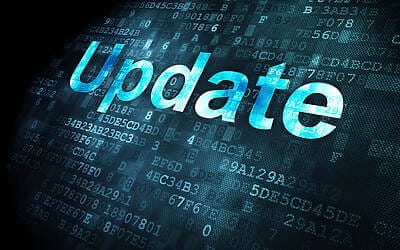Every organization needs a robust defense against cybersecurity threats. They have become so prevalent that it is no longer a matter of if you’ll be hacked or get malware, it is a matter of when. Being unprepared means losing your sensitive data and possibly losing your organization as a whole if the damage is severe enough.
Choosing a single data recovery plan for your entire organization isn’t realistic and can be needlessly expensive. By optimizing your recovery plan and layering resilience requirements, you can save your company money and create a more manageable recovery process.
In this article, we’ll discuss the benefits of having a layered approach to business resilience and data recovery and how our layered resiliency approach can benefit your organization.
Not All Departments Have the Same Requirements
Each department within your company has different requirements when it comes to how much downtime and data loss it can tolerate. While your company’s marketing department might be able to wait a day or two for its access to data to be restored, your company would face much more damage if its e-commerce site was down for two days. For this reason, it’s imperative to provide extra protection to departments and functions that have more sensitivity to downtime and lack of data access.
A layered approach to data recovery planning and protection is an ideal strategy for companies that have departments with different needs. Investing in the types of solutions required for the fastest recovery times and the least amount of data loss can be more expensive. It is more cost-effective to identify which departments and functions need what level of protection and what is acceptable in terms of time frames and then to focus the funds where it is most needed.
Use Multiple Solutions to Achieve RPO Requirements
You can use a combination of solutions to provide continuous data protection replication, backup, and resiliency to meet each department’s RPO requirements. Veeam is an amazing solution for backup and recovery. If a department within your organization cannot function without more immediate access to data or cannot tolerate downtime, having a combination of different data solutions can be better. However, if you need to recover something within a minute, you need a continuous data protection (CDP) solution also. If you have a bit more time, such as fifteen minutes or an hour, there are different types of replication tools that can help keep track of data on a more granular scale.
Stacking the right data protection and recovery tools is an important way to protect your business and its resilience to overcome potential data loss and ransomware attacks.
Ways to Optimize RTO and RPO Per Business Unit
Optimizing RTO and RPO per business unit can lead to a more efficient recovery that costs less to maintain and is more effective.
First, it’s critical to identify each department, function, and business unit’s Recovery Time Objective (RTO) and Recovery Point Objective (RPO). Then, use a layered approach to make sure that the solutions you have in place will achieve each one’s goals.
It is also a good idea to consider how long it will take someone to notice that something’s gone wrong. For example, if it takes four hours for someone to notice that bad code has been applied, you may not be able to use the replication-based backup solutions as it has already been updated with the bad code. But, the a longer-term backup every 24 hours would not be impacted. You would still be able to get the correct code from the other backup.
Immutable Storage Is A Great Place to Start
One of the best options for data backups that provide a higher level of security is immutable storage. Immutable storage uses read-only devices to make a backup copy of important data. Once the data is written to the device, it cannot be changed in any way. That means that as long as you have the device, you have a copy of your data etched in stone that you can make a copy of to restore your working files.
Companies are running to cloud resources for data backup because they forgot the benefits of having immutable onsite data storage. Data storage devices are smaller than ever but carry more data than ever before, so having a data backup system on site won’t need to take up a lot of space or resources.
Improve Security with Four-Eyes Management
Espionage is still a big problem in companies and organizations in competitive markets. Is your company a target for corporate espionage, and do you have systems in place to stop it? You may need to take steps against insiders stealing data or damaging data backups. This means moving those data backups off-site and setting up an accountability system like four-eyes management.
It is possible to setup remote backup systems with immutable backups. Make your security even stronger by implementing four-eyes management, which is a process where two people independently manage your data backup system. Getting two insiders to sabotage the same system at the same time is much harder than one person, giving your systems much more resiliency.
Contact Different Dev to Optimize Your Company’s Layered Resiliency
Having a strategy in place for layered resiliency is an important way to mitigate many risks. Different Dev utilizes a systematic approach to walking through this process and years of experience in recoveries. Our expertise in mapping out the layered resiliency is bar none. Contact Different Dev to learn more.




